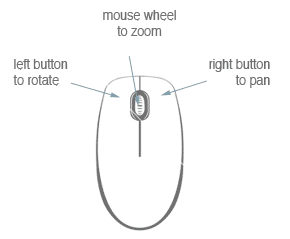
View Rosetta’s comet
Loading interactive 3D visualisation tool. Please be patient as this might take a few minutes to load.




|
View Rosetta’s comet: An interactive 3D visualisation of comet 67P/Churyumov-Gerasimenko
About this tool:
This interactive tool allows you to view Rosetta’s target comet (67P/C-G) from all angles. You can zoom in and out, pan across, and rotate the comet to explore its surface as seen by Rosetta’s navigation camera, NAVCAM. At any stage you can return to the default setting by clicking on Reset View.
The complex and varied surface of comet 67P/C-G has been divided into a number of different geological regions that can be highlighted by clicking on Comet Regions and choosing from the menu that appears. (This is an option only for the Malmer shape model.) Click on Comet Rotate to see how the comet rotates in space. The Display Observations option allows you to toggle blue spheres that represent points along Rosetta’s trajectory. Click on any of these to see NAVCAM images taken from that position; follow the links to access the full-size images from the ESA Archive Image Browser. Note that in this version of the tool the comet orientation is not synchronised with the images. Lighting effects can be changed using Light Options. Two shape models are available in this version of the tool: the ESA NAVCAM shape model and the Malmer shape model. Further details and updates to the tool can be found here. About Rosetta:
Rosetta is a daring mission to chase, orbit, and land on a comet: the Jupiter-family comet 67P/Churyumov-Gerasimenko. In 2014, Rosetta was the first space mission to rendezvous with a comet and the first to deploy a lander to a comet’s surface. It is now accompanying the comet in its orbit around the Sun. Together with its lander Philae, the Rosetta orbiter is helping to unlock the secrets of comets – icy bodies that represent the most primitive building blocks of the Solar System and may have helped to ‘seed’ Earth with water, perhaps even the ingredients for life.
For more about Rosetta visit www.esa.int/rosetta Join the adventure: www.facebook.com/RosettaMission and @ESA_Rosetta |
Use the mouse buttons, combined with the mouse movement to explore the tool: 
This visualisation tool has been developed by TECField/Science Office for the ESA Directorate of Science and Robotic Exploration (sci.esa.int). Contact us at: esa.science@esa.int Full credits can be found at this link. This interactive 3D visualisation is supported only by WebGL compatible browsers and graphics cards. Further information is available here: http://get.webgl.org View Rosetta's comet Version 1.1; release date 03 September 2015
|